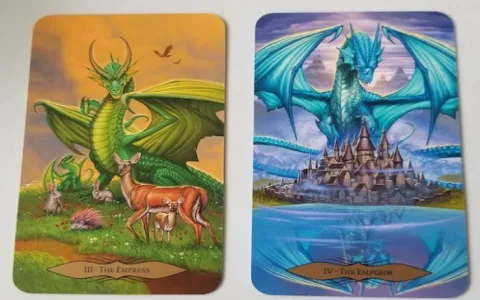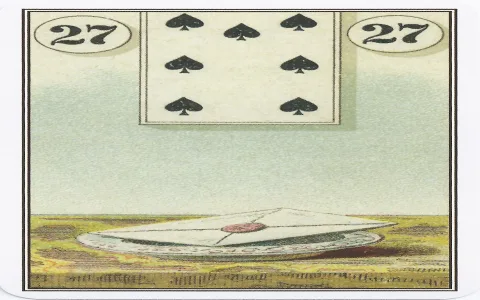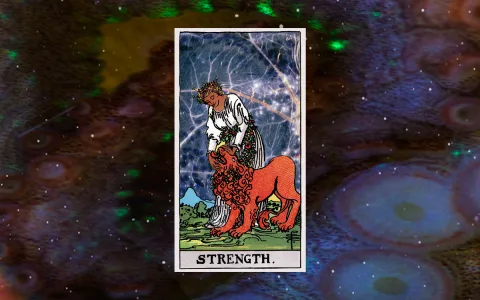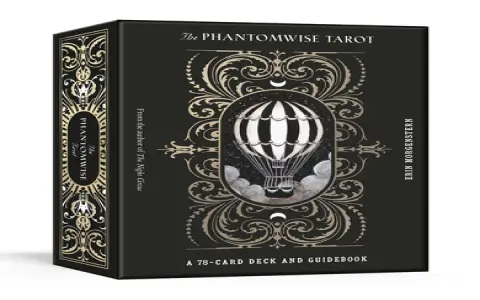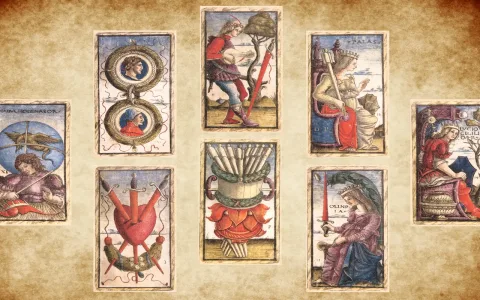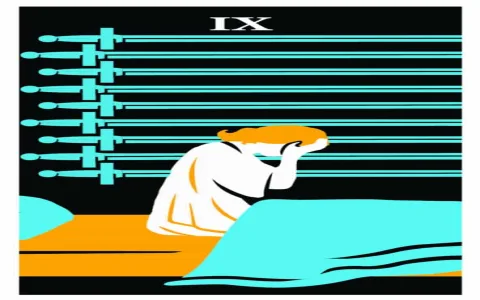The Great Dragon Deck Showdown: Why I Went Through Three Different Decks Just to Find One That Actually Worked
I gotta be honest, dragon decks? They always felt a little cheesy to me. Like something you pick up in a tourist trap gift shop. I’m usually a traditional Rider-Waite kind of person, or maybe something dark and gothic when I’m feeling moody. But then, life throws you a curveball, right?
My curveball was my nephew, Leo. He’s ten, obsessed with anything that flies and breathes fire. He found this old, dusty deck I had buried in a box—I think I bought it like twenty years ago, some terrible mass-produced thing. He saw the dragons and immediately wanted me to teach him how to use them. So I pulled out the deck and tried a simple three-card reading, just to show him the ropes. It was a disaster. The art was so generic, the dragons looked like clip art pasted onto standard symbols. Trying to explain how the “Dragon of Swift Fury” represented the Nine of Swords was impossible. It just didn’t connect. It felt cheap, and frankly, I felt embarrassed introducing him to something so core to my life using such a weak tool.
That was the spark. I swore I wouldn’t let him start his journey with garbage. I decided I was going to find the absolute best, most functional dragon tarot deck on the market. This wasn’t just about art anymore; it was about functionality married to theme. That’s when I really started digging.
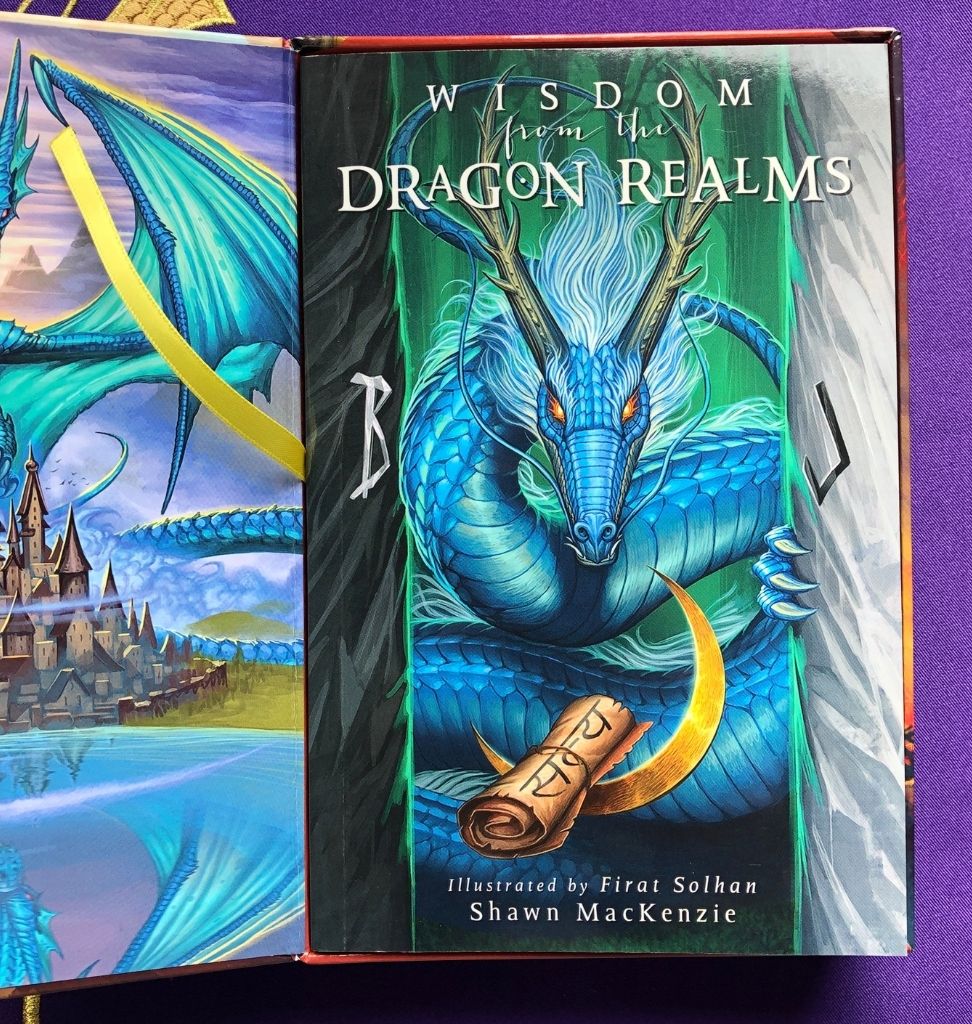
I started with the obvious choice, the one everyone online seems to mention: let’s call it The Classic Flame Deck. I ordered it right away. When it arrived, I immediately unwrapped it and felt the card stock. Heavy duty, which I liked, but the finish was too glossy. It made shuffling a nightmare; they slipped everywhere. The art was definitely clearer than my old dusty relic, but it was almost too structured. Every dragon was sitting exactly where the human figure would be in a standard deck. It was a dragon overlay, not a true integration of myth and meaning. I ran three test readings—just standard daily draws for me and two friends—and every time, the message felt muffled, like I was reading the RWS handbook and just shouting “dragon” afterward. It just wasn’t clicking.
I threw that deck aside and moved to the next contender, a totally different vibe: The Shadow Wing Deck. This one was harder to track down. I ended up paying way too much to get it quickly. When I got my hands on it, I was blown away by the visuals. Truly stunning, deep moody colors, unique mythology carved into every card. The dragons weren’t just big lizards; they looked like elemental forces. But here’s where the trouble started. The artist had taken serious liberties with the Major Arcana. The Hierophant was now “The Keeper of Secrets,” and it didn’t look anything like tradition. I tried to decode the meanings by just looking at the picture, and I kept failing. I messed up two separate spread interpretations because I was so distracted trying to figure out if the purple smoke meant restraint or revelation.
It was clear: accuracy was being sacrificed for art. I realized I needed a middle ground—a deck that respected the structure of tarot but used the dragon imagery not just as decoration, but as an enhancement of the card’s true meaning.
That led me to the third deck, the one that finally worked. I’ll call this one The Scale and Rune Deck. I found it tucked away at a small occult shop during a road trip. I picked up the box, felt the matte finish, and immediately felt better. They shuffled like butter. I got them home and started my final round of testing. This time, I didn’t rush. I sat down and compared the imagery card-by-card with my classic RWS deck. What the artist did here was brilliant: for the Suit of Swords, they used aggressive, sharp, metallic dragons to symbolize conflict and intellect. For the Cups, the dragons were swirling water and gentle flight, focusing on emotion and intuition.
The dragons weren’t just props; they were the embodiment of the suit’s energy. When I pulled the Ten of Swords, the image wasn’t just a stabbed figure—it was a massive, broken dragon collapsing under the weight of ten metal blades stuck in its back. The despair hit me immediately.
I did my final test with Leo. I laid out a simple reading for him using The Scale and Rune Deck. I watched his eyes track the images. He didn’t struggle to connect the “dragon in the pile of gold” with the Four of Pentacles. The visual clarity and emotional impact were instant. We spent an hour going through the cards, and for the first time, it didn’t feel like a chore or a cheap trick. It felt real. It felt powerful.
So, after all that work, buying and testing three different sets just to please a ten-year-old and myself, I finally found the winner. It wasn’t the shiniest or the most expensive. It was the one where the artist actually cared about the Tarot tradition while incorporating the mythical weight of the dragon. Don’t waste your time on decks where the dragons are just stickers. Go for the decks where the dragon is the meaning. I learned my lesson: you have to feel the card stock, study the symbolism, and make sure the art elevates the message, not buries it.
And Leo? He’s already asking for another reading. Mission accomplished.

